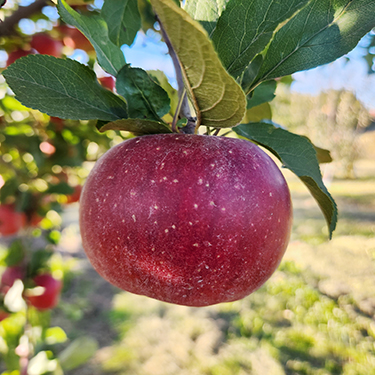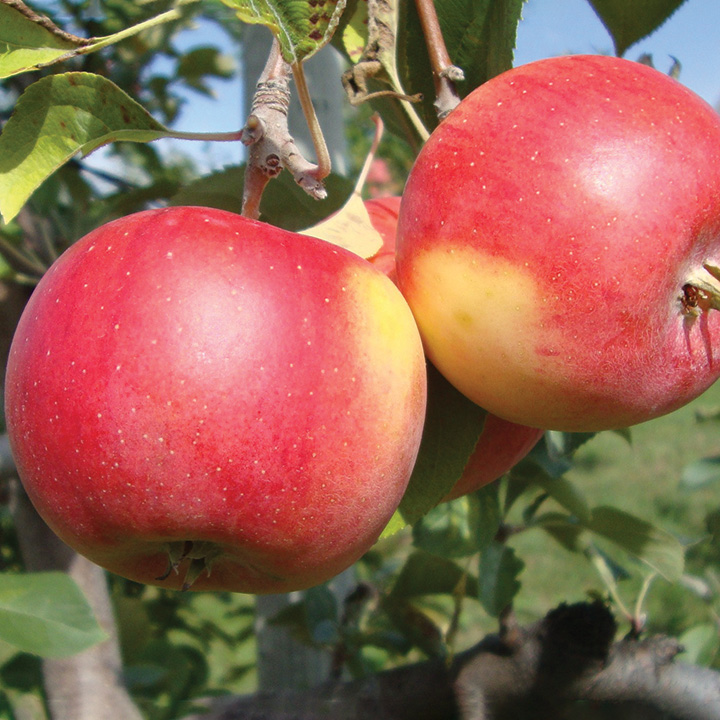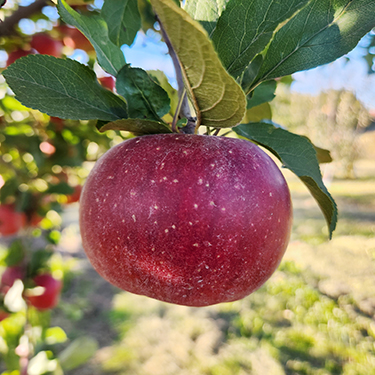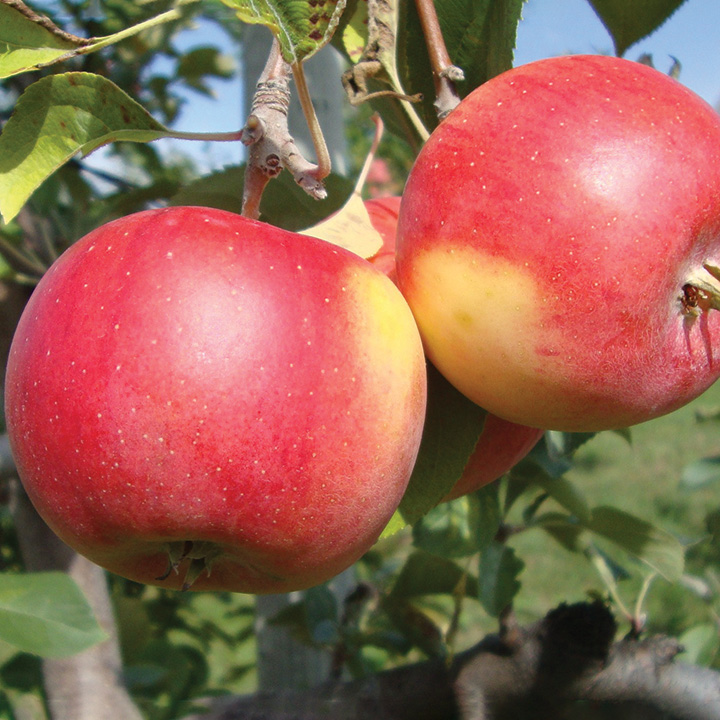Red-Fleshed Apple : RUBAIYAT Dwarf (B10)
$53.95
Albert Etter was an eccentric, self-taught fruit breeder who was obsessed with developing red-fleshed apples. After his death in 1950, the experimental orchard at his abandoned homestead in the mountains of northwestern California slowly went back to wilderness. Such was the state of affairs when Ram Fishman of Greenmantle Nursery began exploring later in the 1970s. Among the numerous red-fleshed varieties he encountered, seven were selected as superior, and subsequently dubbed as the Rosetta™ series. Within this group Rubaiyat® stands out like a Shiny Christmas ornament. Ruby-red from the outside to the core, this delightfully aromatic apple’s flavour is intensely sweet with a tart, cherry-berry edge to it. Crisp, yet melting and juicy, Rubaiyat is fine for dessert and funky for culinary use.
NEEDS A POLLENIZER | ZONE 4/5 | HARVEST: LATE OCT.
Only logged in customers who have purchased this product may leave a review.
Growing Tips
Besides selecting the most disease resistant varieties, there are
a few simple things to do to have better apples.
- Fertilize under the outer edges of your trees. There are no feeder roots next to the trunk. A well fed tree stays healthier. (Adequate calcium in the soil also helps so that apples keep longer.)
- Pick up fallen fruit and compost, dispose of, or feed to livestock (where possible).
- Rake up leaves in the fall and compost them away from the orchard.
- Prune trees to encourage light and air to reach the inside of the tree.
- Provide bird nesting sites near your orchard. A variety of orchard companion type plants will attract native pollinator insects and also encourage birds to come and eat insect pests.





Reviews
There are no reviews yet.